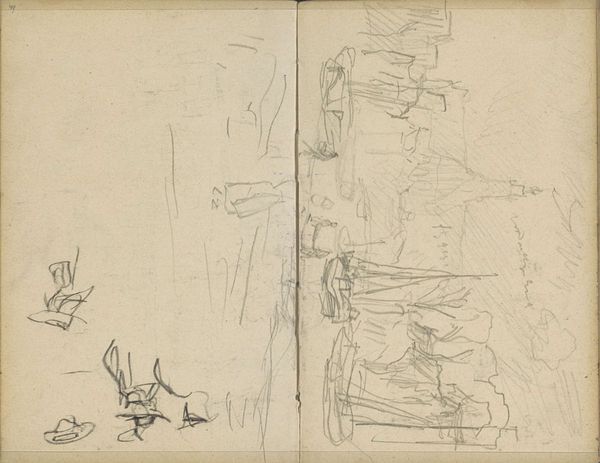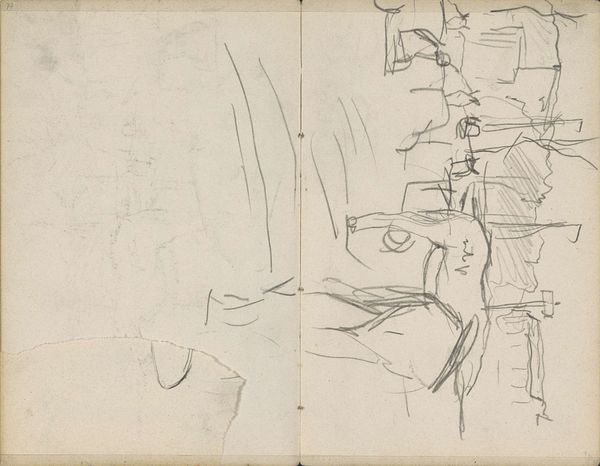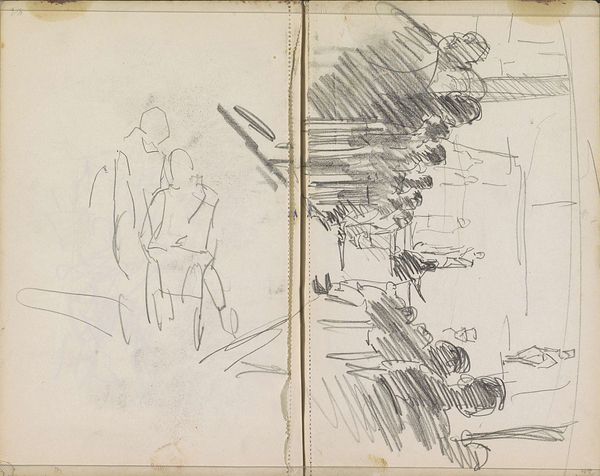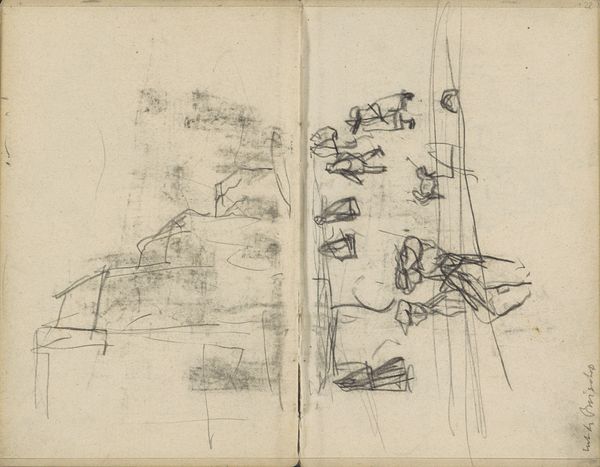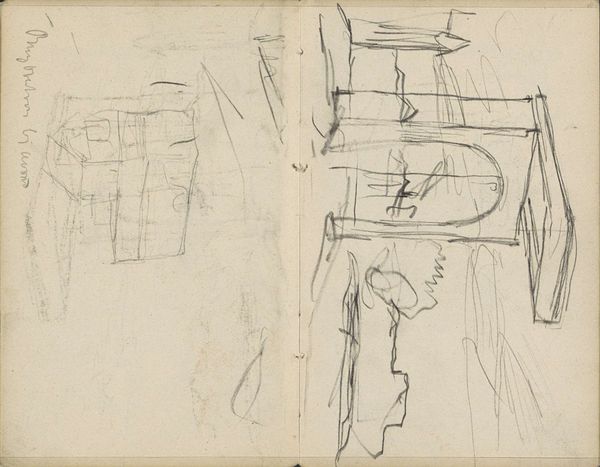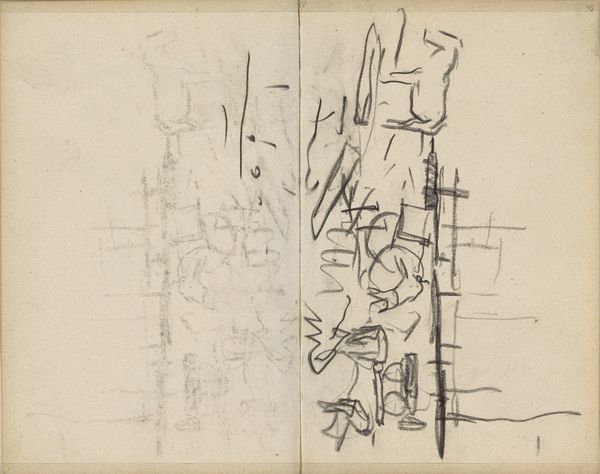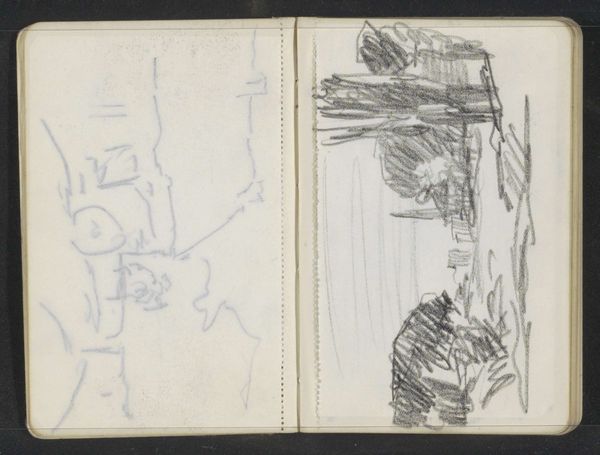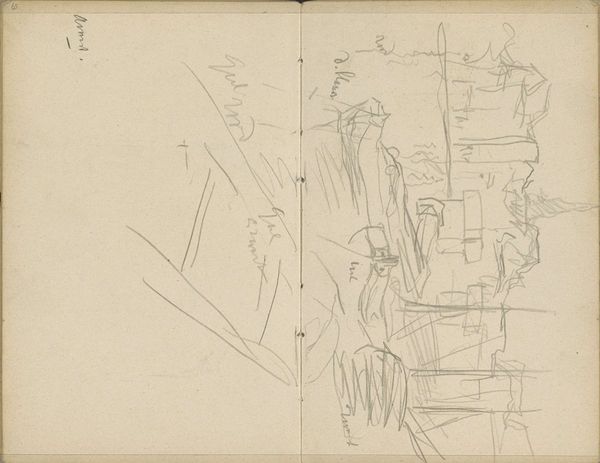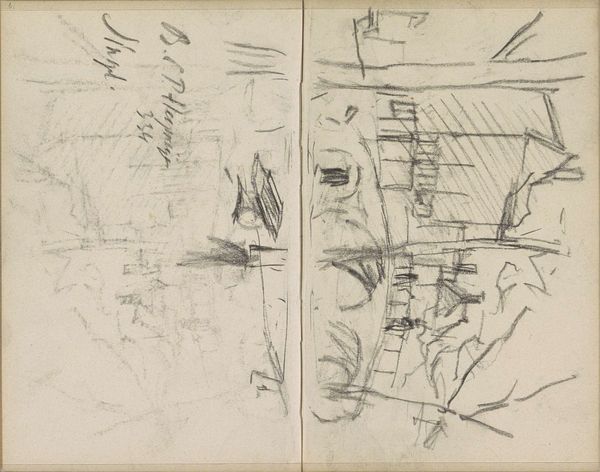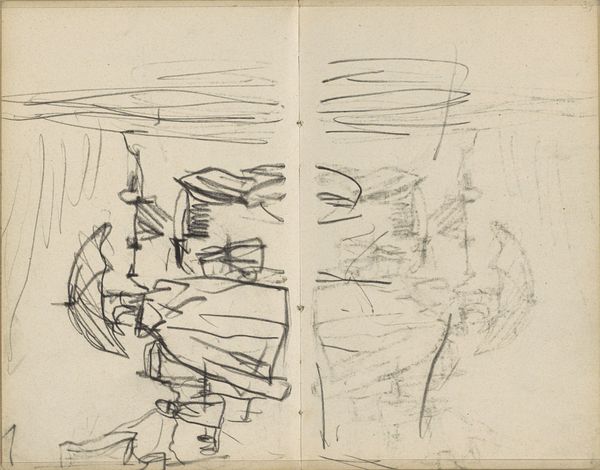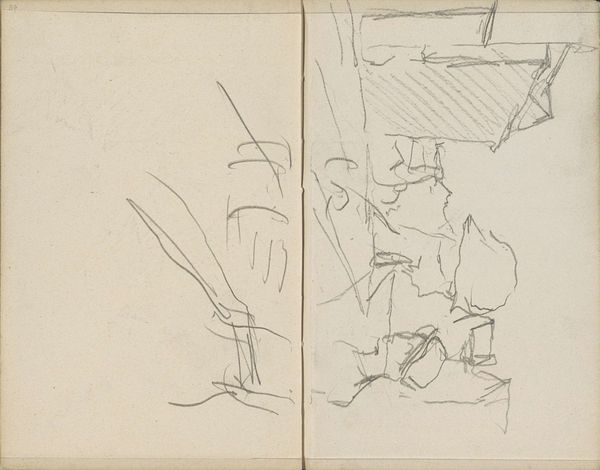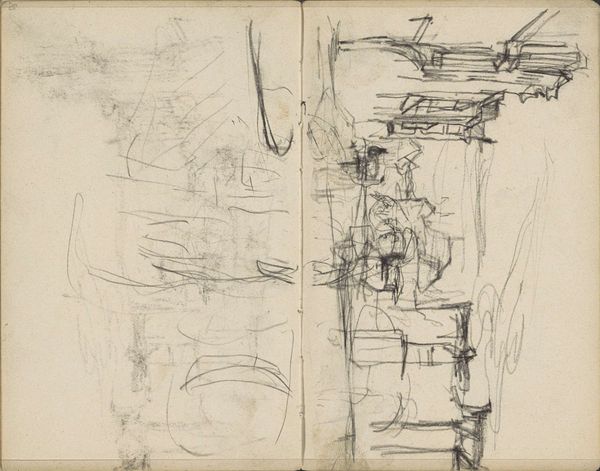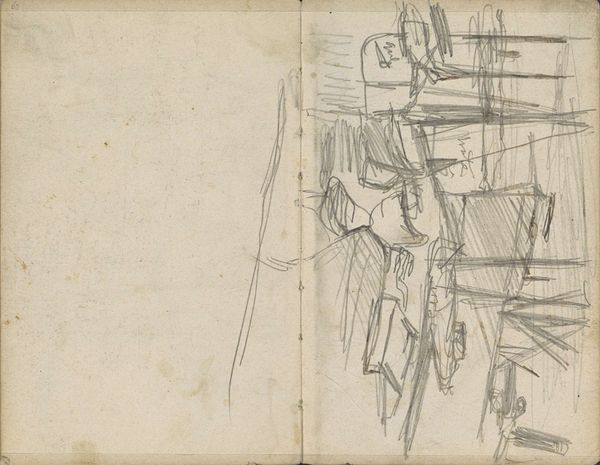
Copyright: Rijks Museum: Open Domain
Curator: Immediately, the rapid lines and light graphite wash create a sense of fleeting movement. It's gestural and quite captivating. Editor: Indeed. Here we have "Schoolkinderen in de Planciusstraat te Amsterdam," a drawing by George Hendrik Breitner, circa 1903, held in the Rijksmuseum. The medium is graphite on paper. I’m interested in the industrial landscape being developed in Amsterdam at the turn of the century, particularly how this piece captures working-class life during that period. The artist seems deeply engaged with portraying his observations about society. Curator: I agree that it conveys a kind of social realism through a casual, unfinished aesthetic. Note the expressive lines around the figures' heads and the sketchy treatment of their bodies, contrasted against more definitive dark outlines. Does it point toward the dehumanizing aspects of factory labor affecting children’s formative years? Editor: Precisely. And let’s think about the materiality. Breitner chooses a readily available, inexpensive medium—graphite on paper in a commonplace sketchbook. He is interested in immediacy but he is still very intentional in his mark making. Curator: From a purely formal standpoint, that duality strikes me too. The blurred smudges contribute to the overall sense of transience. Is this merely the effect of charcoal dust smearing across the page, or is there more depth and complexity there? Are those smudges simply atmospheric effects, or are they obscuring further detail or social commentary about how easily working class children get left behind and disappear? Editor: Absolutely the latter. By using cheap materials he makes this work of the laboring class accessible. He’s able to distribute his political messaging much easier that way, which he accomplishes by intentionally producing an evocative aesthetic. This brings art closer to people's daily experience. Curator: Thank you. Examining Breitner's artistic choices gives me so much more to reflect on when considering that sociohistorical framework. Editor: My pleasure. I agree the drawing offers potent material evidence of Breitner’s society, its politics, and art's impact on it.
Comments
No comments
Be the first to comment and join the conversation on the ultimate creative platform.
